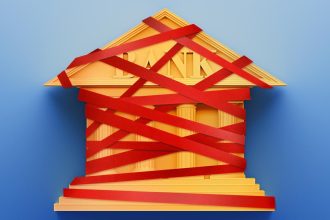The increasing complexity of the current economic environment can be overwhelming for business owners, and this concern is only amplified by the ongoing conversations and coverage in the media. As uncertainty remains, it is crucial for CEOs to filter out the noise and focus on their local economies to ensure they are homing in on what really matters. Whether it be rising interest rates, ongoing inflation, low housing inventory or concerns about the resilience of the banking industry – news can drive business owners to panic. Here’s what they should do instead:
Pay Attention to the Local Economy
Understanding regional economic indicators, such as consumer spending patterns and local employment rates, can provide a clearer picture than broad national trends. For instance, while national headlines might focus on rising interest rates and inflation, economic conditions can in fact vary widely from one market to another, making it crucial for business owners to pay close attention to their local market and factors that impact their industry. Focusing on each states’ business environment, consumer spending, labor market and overall economic growth can present business owners with unique opportunities to expand their services or product lines. It can be beneficial to work with a bank or lender that offers bespoke services tailored to a specific industry or one that has a pulse on the local economies it serves.
Separate What is Temporary and Permanent
Distinguishing between temporary disruptions and permanent shifts is crucial for strategic planning. Small business leaders should look at market trends and economic reports to identify which challenges are likely to be short-lived and which may represent long-term changes. For example, a spike in inflation might be a transient phase that will eventually stabilize, whereas digital transformation is may have lasting impacts transforming every industry. Recognizing these differences can help businesses allocate resources more effectively and make informed decisions about investments and adjustments. Additionally, navigating regulatory changes and managing operational costs will be crucial for sustaining growth and leveraging opportunities that might emerge.
Prioritize Technology and Operational Needs
Leveraging technology is no longer optional but a necessity for staying competitive. Small businesses should consider adopting new technologies that enhance operational efficiency and open new market opportunities. This could range from integrating advanced software solutions for better inventory management to utilizing online platforms for reaching a broader audience. Moreover, forming strategic partnerships can accelerate growth, providing small businesses with the resources and support needed to navigate a tighter economic environment effectively.
Focus on the Data that Matters and Prepare Accordingly
Focusing on relevant data and preparing strategically for future trends is essential. Much of the national narrative has been around interest rates, and while it is a critical data point for businesses to pay attention to, there are a number of others to track to gain a holistic view of the economic environment. – especially in sectors such as construction, which boasted strong job numbers, and retail & travel, both of which had great Q1 sales. What’s more, the recent job report added 303,000 jobs in March – this, alongside strong consumer demand and growth in wages nationally, underlines the sheer strength of the U.S. economy. This is just a glimpse of the data the Federal Reserve considers when determining the state of the economy and making the decision to keep interest rates where they are to tame inflation. In turn, small businesses should remain cautiously optimistic, while simultaneously looking closely at the data that directly impacts their business to ensure they prepare for future success.
—
Making sound business decisions in an increasingly complex world can be challenging, especially with more and more media channels and how people are influenced. Small business owners should keep a close eye on their local demand and economic environment while remaining opportunistic when it comes to their growth and operations. It’s also critical to plan strategically for the long-term health and sustainability of the business. Small business leaders should remain nimble and consider what truly matters to building a successful enterprise.
Read the full article here














